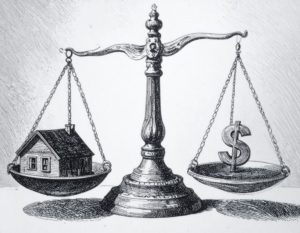The stabilisation of mortgage rates is one of several market indicators signalling a possible end to the country’s extended property downturn, CoreLogic NZ Chief Property Economist Kelvin Davidson says

Despite further house price falls in March, subdued property activity levels and early April’s 50 basis point cash rate hike, CoreLogic’s Monthly Housing Chart Pack shows the market fundamentals are not as weak as they have been.
There are green shoots beginning to emerge among metrics such as listing numbers, sales volumes and an easing in price falls.
Value trends remain weakest in the North Island, though parts of Canterbury and the West Coast are still recording some modest increases.
There were also hints in the sales data for March that the worst may now have passed for activity, and with new listings flows each week still very low, the total stock of property available for sale on the market is now just showing the first signs of tightening a little.
Average property values fell 2.4% in the March quarter, taking the annual decline to 10.5%, surpassing the worst point of the Global Financial Crisis.
Further price falls are still possible in the short-term, but there is little movement among banks and lenders to pass on the most recent OCR increase. This decision suggests mortgage rates may have reached their peak, allowing borrowers to quantify their ‘worst case’.
Any suggestion that interest rates have topped out will provide buyers and sellers with more confidence and is eventually likely to result in a turnaround in housing sentiment.
When you also consider continued high employment levels – and employers wanting to retain current staff at all costs – rising net migration, and the possibility that some investors could start to return to the market as they try to pre-empt debt to income ratio caps next year, there’s a growing sense that the market’s downturn could end in the second half of 2023.
Of course, uncertainty remains high. But there does now seem to be light at the end of the tunnel.
Key Housing Chart Pack highlights:
- New Zealand’s residential real estate is worth a combined $1.57 trillion.
- Property values decreased 2.4% in the first quarter of 2023.
- Property values have fallen 10.5% in the past year, with the decline in average values surpassing the worst point of the Global Financial Crisis.
- With the Auckland region, Auckland City has recorded the smallest fall in Q1 values, down 0.8% in the three months to March 2023. Papakura has recorded the largest fall, down 6.1% over the period.
- Wellington has recorded a -20.0% drop in average property values in the 12 months to March, the largest of the main centres. Christchurch has experienced the most marginal falls, declining -2.9% for the same period .
- Sales volumes in the 12 months to March were 30.9% lower than a year ago.
- There were 7,680 new listings over the four weeks ending 9 April compared to 10,907 for the same period in 2022.
- Total stock on market is 36,172, well above the five-year average of 30,803.
- First home buyers remain a solid presence in the property market, with a 25% share of purchases over Q1 2023.
- Annual rental growth is around 3% in the 12 months to March, more subdued compared to 2022 levels, at least partly due to tenants’ affordability constraints.
- Around 50% of NZ’s existing mortgages by value are currently fixed but due to reprice onto a new (generally higher) mortgage rate over the next 12 months.









